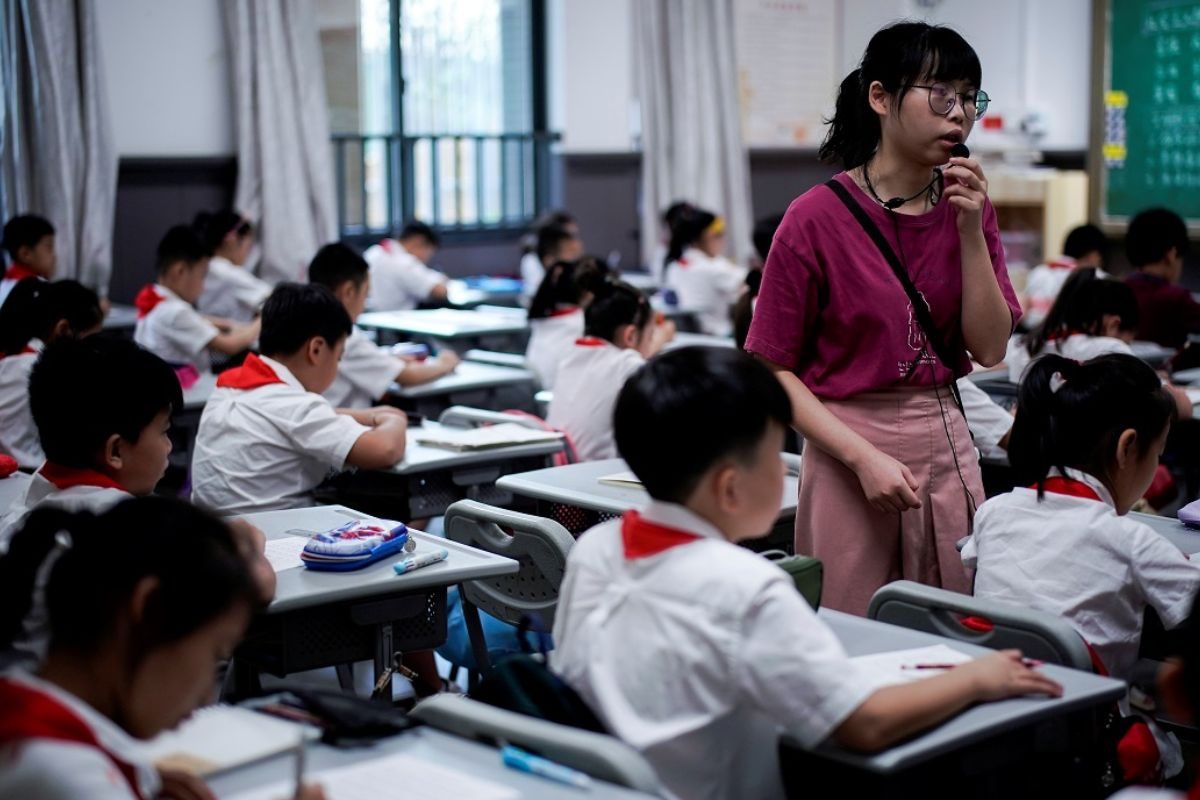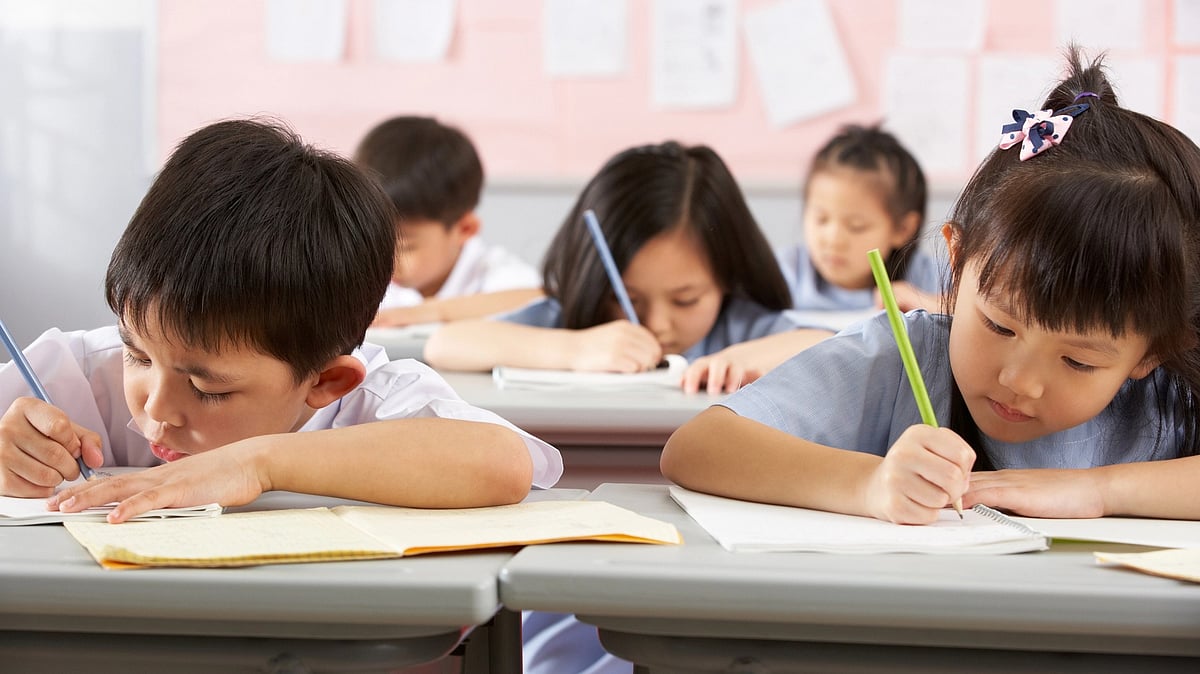Innovative School Implements ₹7,800 Fee for Afternoon Naps, Raising Concerns

Innovative School Implements ₹7,800 Fee for Afternoon Naps, Raising Concerns
In a surprising turn of events, a school in China has made headlines by announcing plans to charge its students for indulging in afternoon naps on campus. The eyebrow-raising move has sparked widespread discussion and debate regarding the educational system’s evolving dynamics, student welfare, and financial considerations.
According to a notice that recently came to light, students at this undisclosed school will now have to open their wallets to catch a few Z’s during the school day. The fee structure outlined in the notice is as follows: taking a nap at one’s desk would cost 200 yuan (approximately ₹2,300) per term, while opting for mats in the classrooms would set students back 360 yuan (around ₹4,100) per term. For those seeking the ultimate in midday rest, sleeping in private rooms equipped with beds would come with a hefty price tag of 680 yuan (₹7,800) per term.
This move has generated considerable interest and prompted a variety of reactions from parents, educators, and the public at large. The decision to monetize what has traditionally been a free and perhaps even encouraged aspect of school life has raised numerous questions and concerns.

Redefining the School Experience
The concept of paying for naptime at school is undeniably novel, challenging conventional wisdom about what schools should provide to their students. Traditionally, a brief nap has been seen as a way to recharge and improve focus, particularly in the context of long school days. However, this school’s decision to turn naptime into a revenue-generating endeavor may mark a shift in how educational institutions perceive their role.
Financial Considerations and Controversies
One of the key questions being raised is whether such charges are justified and necessary. Proponents argue that the fees could serve as a source of income for the school, potentially allowing them to invest in better facilities and resources. Moreover, it may teach students financial responsibility and the importance of valuing services.
On the flip side, critics are concerned that this move could place an additional burden on already financially strained families. China, like many countries, faces economic disparities, and for some parents, paying an extra fee for something as basic as a nap may be a considerable hardship. This has prompted discussions about equity and whether such a practice is fair to all students, regardless of their socioeconomic backgrounds.
Student Welfare and Health Implications
The decision also raises questions about student well-being. The school’s policy suggests that students may be encouraged to forgo rest in favor of cost-saving measures. This has sparked concerns about the potential consequences for students’ physical and mental health. Fatigue and stress are already common issues among students, and this move could exacerbate these problems.
Moreover, sleep plays a critical role in cognitive development, memory consolidation, and overall academic performance. By attaching a financial cost to something as fundamental as rest, the school may inadvertently undermine the very educational outcomes it seeks to achieve.

Parental Reactions
The news has not gone unnoticed by parents. Many are expressing their opinions on social media and in discussions with school officials. Some parents see this as an opportunity to teach their children about fiscal responsibility, while others are outraged by what they perceive as a money-grabbing tactic by the school.
Educational Impact
Beyond the financial and well-being considerations, this development also shines a light on broader questions about the purpose of education. Should schools solely focus on academic instruction, or do they have a responsibility to provide a more holistic learning experience that includes physical and emotional well-being?
This school’s decision could set a precedent that other institutions might follow, leading to a fundamental shift in how schools operate and what they offer to students. It remains to be seen whether this experiment will be deemed successful or whether it will prompt a reevaluation of priorities within the education system.
As discussions continue to swirl around this unique school policy, some experts in education are emphasizing the need for a more comprehensive approach to student well-being. They argue that education should encompass not only academic learning but also the development of life skills, emotional intelligence, and physical health. Viewing naps as an essential component of overall student wellness, these proponents advocate for schools to consider providing nap spaces free of charge, where students can recharge and better engage in their studies.
Furthermore, the introduction of fees for napping raises broader questions about the commercialization of education. Critics argue that education should remain focused on imparting knowledge and skills rather than becoming a profit-driven enterprise. The notion of attaching a price tag to something as basic as rest within a school setting challenges the traditional understanding of what a school should offer its students.
Another facet of this debate centers on the importance of communication and collaboration between schools and parents. The decision to implement such a policy without extensive consultation with parents has left many feeling disenfranchised. Some are demanding a more transparent dialogue between educational institutions and families to ensure that decisions made by schools align with the values and expectations of the community.
In the coming months, it will be fascinating to observe how this school’s experiment with charging students for napping unfolds and whether it triggers a broader reevaluation of the priorities and responsibilities of educational institutions. As students, parents, educators, and policymakers engage in a spirited discourse on this issue, it may ultimately lead to innovative solutions that strike a balance between the fiscal realities of running schools and the well-being and development of the young minds they nurture.

Conclusion
In the wake of this unconventional announcement, the school in China charging students for afternoon naps has ignited a heated debate about the evolving role of educational institutions, financial considerations, student welfare, and the impact on the broader educational landscape. As the story unfolds, it will be closely watched by educators, parents, and the public alike, as it may offer valuable insights into the changing nature of education and the values that underpin it.
Innovative School Implements ₹7,800 Fee for Afternoon Naps, Raising Concerns
In a surprising turn of events, a school in China has made headlines by announcing plans to charge its students for indulging in afternoon naps on campus. The eyebrow-raising move has sparked widespread discussion and debate regarding the educational system’s evolving dynamics, student welfare, and financial considerations.
According to a notice that recently came to light, students at this undisclosed school will now have to open their wallets to catch a few Z’s during the school day. The fee structure outlined in the notice is as follows: taking a nap at one’s desk would cost 200 yuan (approximately ₹2,300) per term, while opting for mats in the classrooms would set students back 360 yuan (around ₹4,100) per term. For those seeking the ultimate in midday rest, sleeping in private rooms equipped with beds would come with a hefty price tag of 680 yuan (₹7,800) per term.
This move has generated considerable interest and prompted a variety of reactions from parents, educators, and the public at large. The decision to monetize what has traditionally been a free and perhaps even encouraged aspect of school life has raised numerous questions and concerns.




